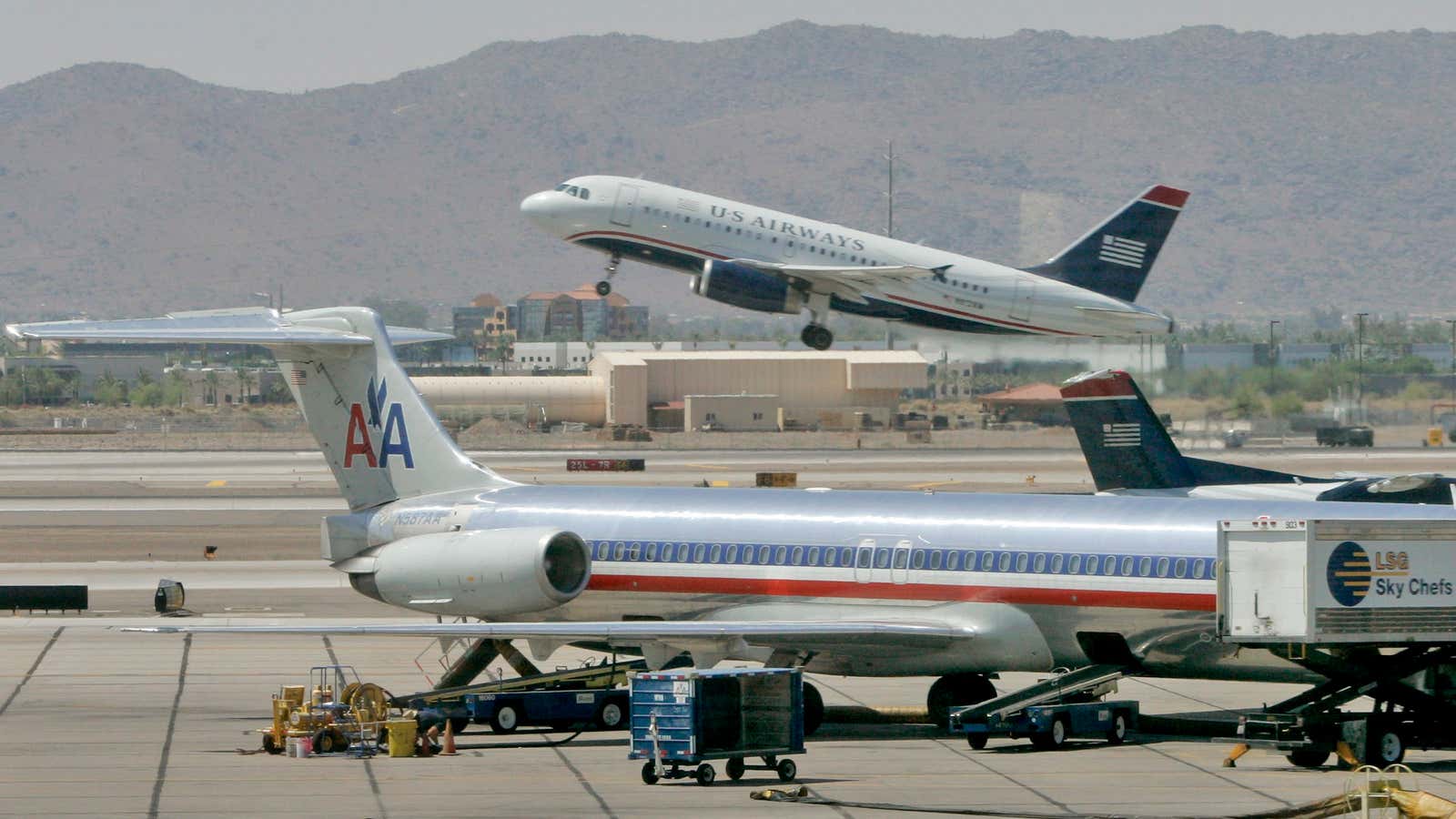The merger reportedly close at hand (paywall) between American Airlines and US Airways would create the world’s biggest airline by number of passengers. But the new airline’s power will come not just from its sheer size, but from its dominance in a particular arena, the US East Coast.
That’s because, according to experts, travelers who are members of the oneworld airline alliance—of which American is a part—will suddenly have ten times more connection choices on the East Coast, where US Airways is a dominant player and American has seen its routes erode. That’s a lucrative market, since East Coast cities are the destination of a lot of business travelers.
Oneworld is the smallest of the three airline alliances, and adding US Airways would also likely help it retain and attract new members, especially since the number of respected carriers that aren’t already part of an alliance is shrinking. Oneworld also includes British Airways, Japan Airlines, Qantas and Royal Jordanian.
For its part, US Airways is currently part of the Star Alliance, the largest, with 27 member airlines as against oneworld’s 12. It includes United Airlines—a product of the merger between United and Continental in 2010—Lufthansa, Singapore Airlines, Air China and others. US Airways would probably leave Star as a result of the merger, and people who have Star Alliance membership through the airline would then likely transfer into oneworld. US Airways’ regular customers would get access to more international routes, particularly in South America and Europe.
A similar choice over which alliance to belong to faces Chile’s LAN Airlines, which is part of oneworld but will have to decide whether to stay in it after it completes its merger with Brazil’s TAM, which is in Star.
The other alliance is SkyTeam, which is anchored by Delta, and has 19 members. Korean Air, Air France and China Airlines are also participants.
